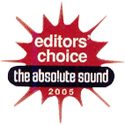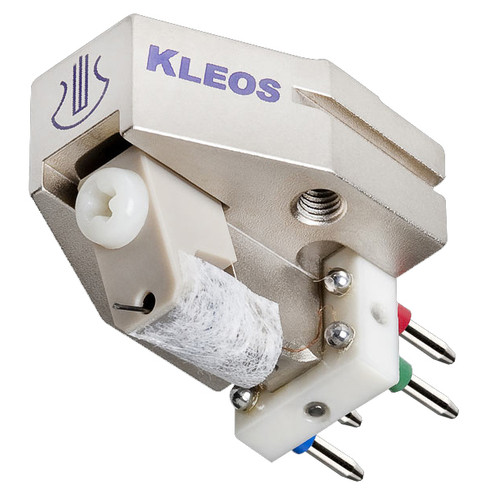


Only $1995.00! Regularly $5995.00! You Save 4000!
Certified Factory Rebuilt! Fully Tested & Inspected by Peter Ledermann, President/Chief Engineer at Soundsmith!
Hurry, Only 1 Available. Won't Last Long! 1 year warranty included! Satisfaction Guaranteed!
This item not eligible for any further discount offers!
The Titan i is one of the most advanced cartridges that Lyra has ever made! The Titan i is a replacement for the discontinued Parnassus D.C.t.
Compared to the D.C.t, the Titan i is conceptually more sophisticated, offers a higher level of component design and quality, and delivers a superior level of sonic performance in every possible way. The Titan's potential for detail retrieval, dynamics, perceived frequency extension and tracking have been all been much improved. In addition to having the potential for a much higher level of performance, the Titan has also been designed for greater ease of setup. In other words, the Titan makes it easier for more audiophiles to extract a greater amount of its performance potential.
As a design, the Titan i takes the best aspects of the Parnassus D.C.t and Helikon, and introduces further advancements of its own.
As with all other current Lyra cartridges, the only components that create the magnetic field of the Titan i are two symmetrical disc magnets. The magnetic field is therefore also symmetrical, and the field distortions created by conventional polepeces and offset magnets have been completely eliminated. The magnets are made of a new neodymium compound that is the most powerful magnetic material in the world. The improvements to the magnetic field result in more accurate conversion of mechanical vibrations into electrical signals; in other words, lower distortion. At the same time, this allows the coils and cantilever to move more freely, leading to improved low level resolution and better tracking abilities, particularly at low vertical tracking forces.
The Titan i's body is machined from a single piece of titanium alloy, which has been curved and shaped in a manner calculated to minimize standing waves and internal reflections and resonance. This attention to detail has also been extended to the interior body structures, which are too intricate to be formed by mechanical means. A different process called electrical discharge machining was therefore employed, not only because of its ability to fashion complex shapes, but also because unlike conventional machining, it is a non-contact process, and therefore does not create any mechanical stresses in the machined structures. The superior rigidity afforded by the Titan's solid, intricate, low-resonance body construction helps create a clearly defined reference pivot for the cantilever, which improves the conversion accuracy of mechanical vibrations into electrical signals. The rigid titanium body also creates an efficient path for the vibrations from the stylus to be channeled away from the critical signal generator area and into the tonearm, where this energy can be dissipated effectively. The titanium alloy itself is a different type from that used in the Parnassus DCt, and has been chosen specifically for its low-level of self-resonance and advantageous sonic properties.
Although the Parnassus DCt was a semi-open design, the Titan i is fully nude, with a body shape that has been designed to minimize cavity resonance, and also minimize the presence of conductive materials in the vicinity of the magnetic gap and signal generator coils. For similar reasons, the front magnet carrier of the Titan is both non-magnetic and non-conductive. This non-conductive, nude construction prevents the formation of dynamically induced variable eddy currents that would otherwise interfere with the primary magnetic field and distort the signal generation process.
The Titan i's stylus rides at the tip of a low-mass diamond block measuring 0.08 x 0.12 x 0.5mm. The stylus itself is a Lyra-designed line-contact, with a major radius of 70 micrometers and a minor radius of 3 micrometers. We first designed a number of different stylus shapes based on theory and calculation, and then subjected the candidates to exhaustive interactive testing. The result is a stylus that is extremely good at tracking and detail retrieval, yet offers ultra-low levels of groove wear, has a very good signal-noise ratio, and reduces the audibility of groove damage.
The Titan i uses a compound structure cantilever which has been designed to increase the propagation velocity and self-dampening characteristics as much as possible. Consisting of a solid boron core, an outer diamond layer, and an additional reinforcement metal jacket, the cantilever's combination of low mass, high stiffness and low internal resonance reduces overshoot and ringing, thereby helping to minimize the audibility of groove damage and improving the perceived signal-noise ratio, even on worn records.
The 5.5-ohm low-impedance signal coils are wound from high-purity copper over a chemically-refined high-purity iron core, which has been gold-plated to reduce eddy currents and thereby minimize distortion. The impedance characteristics remain flat far beyond the audible range, and the use of high-purity materials reduces both measured and audible distortions.
The free length of the Titan i's suspension wire is ultra-short. This creates a precisely defined reference pivot for the cantilever, and plays an important role in improving the conversion accuracy of mechanical vibrations into electrical signals. The compound damper system utilizes completely new damper materials that provide superior tracking, detail retrieval and minimal ringing.
The cantilever assembly of the Titan i has been mounted directly to the titanium body. Intermediate mounting methods such as polepieces or subcarriers have been completely eliminated. Both the cantilever and the insides of the body have been shaped so that when the two components are joined to each other, a double-knife-edge system will be created, which will concentrate as much pressure as possible on the joint area and thereby achieving a type of cold weld. This direct mounting system minimizes the number of mechanical joints between the cantilever and tonearm, and maximizes mechanical energy transfer away from the stylus and generator area. The end result is far less reflected mechanical energy, and therefore significantly reduced levels of distortion and resonance.
The signal output pins of the Titan i are plated with rhodium, a highly conductive yet tough material that, unlike gold, will stay intact and retain its superior conductivity, even over repeated cartridge installations.
The Titan i has been designed for ease of use. The body incorporates threaded M2.6 holes to make it easier to install the mounting screws. The total height of the Titan is just under 17.9mm, while the distance from the center of the mounting screws to the stylus tip is 3/8 inch (9.525mm). Henceforth, all Lyra cartridges will be standardized with these height and mounting-screw-to-stylus dimensions.
Despite that the Titan i is a fully nude cartridge, the design of the stylus guard affords the stylus and cantilever full protection when the Titan is not being used and also during the installation process. The slide-on design of the stylus guard makes it easy to use and minimizes risk to the cantilever when the guard is being installed.
Features:
Machined aluminum alloy, mono-block (nude) construction
Cantilever mounting
Direct-Flux, dual disk magnet system
Full Protective, transparent cover
Specifications:
Type: Medium weight, medium compliance, low-impedance moving coil cartridge
Stylus: Lyra-designed long-footprint variable-radius line-contact nude diamond (3um x 70um), slot-mounted
Cantilever system: Diamond-coated solid boron rod with short one-point wire suspension, directly mounted into cartridge body via high-pressure knife-edge system
Coils: 2-layer deep, 6N high-purity copper, square-shaped chemically-purified high-purity iron former, 5.4ohm self-impedance, 8.8uH inductance
Output voltage: 0.5mV@5cm/sec., zero to peak, 45 degrees (CBS test record, other test records may alter results)
Frequency range: 10Hz ~ 50kHz
Channel separation: 35dB or better at 1kHz
Compliance: Approx. 12 x 10-6cm/dyne at 100Hz
Vertical tracking angle: 20 degrees
Cartridge body: One-piece machining from solid titanium billet, with non-parallel shaping, and body threaded directly for mounting screws
Cartridge mounting screws: 2.6mm 0.45 pitch JIS standard
Distance from mounting holes to stylus tip: 9.5mm
Cartridge weight (without stylus cover): 10.5g
Recommended tracking force: 1.65 ~ 1.75g
Recommended load directly into MC phono input: 95.3ohm ~ 816ohm (determine by listening)
Recommended load via step-up transformer: 5 ~ 15ohm (step-up transformer's output must be connected to 10kohm ~ 47kohm MM-level RIAA input, preferably via short, low-capacitance cable)
Recommended tonearms: High-quality pivoted or linear (tangential) tonearms with rigid bearing(s), adjustable anti-skating force, preferably VTA adjustment









